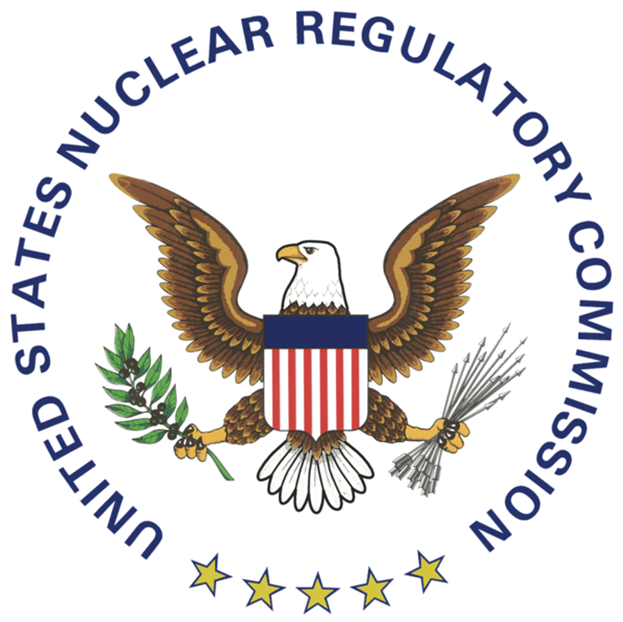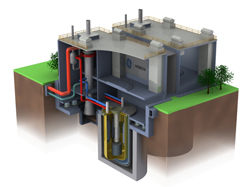Part 1 of 3 Parts
Since World War II, there have been stringent regulations that apply to any business or other institution in which nuclear radiation is present. These regulations apply to hospitals, uranium mines, nuclear power plants, nuclear waste disposal facilities, industrial sites that utilize radioactive materials for testing, private laboratories etc. These rules are based on what is called the linear no-threshold model. This model indicates that the biological dangers of radiation increase linearly with the level of radiation and that there is no minimum level of radiation that is safe.
The regulations are referred to as the ALARA standard which stands for “as low as reasonably achievable”. Such things as isolation units, elaborate shielding, specialized air cleaners and filters and stringent worker training are required by these federal standards. Many businesses consider these radiation standards to be unnecessarily burdensome and expensive. Some estimate that billions of dollars have to be spent to adhere to these standards.
Various groups have lobbied to relax these federal radiation regulations in the past but have had no success. However, in recent years, a new and relatively unknown group called the Scientists for Accurate Radiation Information (SARI) has been peddling proposals for relaxing radiation exposure standards. SARI was created in 2013 by members of the nuclear industry who wanted to soothe public fears of radiation that were exacerbated by the 2011 Fukushima nuclear disaster.
SARI supports an alternative theory of the biological effects of radiation known as “radiation hormesis”. This theory claims that things such as radiation that may be dangerous large quantities may actually be beneficial to health in low doses. This is rejected by most scientists in the field.
Despite the questionable theory they promote, a member of SARI has been appointed to head a Radiation Advisory Panel at the Environmental Protection Agency which assists in the establishment of federal radiation dose standards. Several suggestions for relaxation of radiation standards on the part of the Advisory Panel are actually being considered for adoption by the Nuclear Regulatory Commission.
Members of SARI have held jobs related to radiation protection at the EPA, the Department of Labor, the Department of Energy and DoE subagencies involved in the construction of nuclear weapons at nine federal factories around the U.S. Members have also worked in nuclear medicine, the commercial nuclear industry, and as college professors who teach nuclear medicine and nuclear hygiene.
In 2015, SARI petitioned the NRC to drop its current approach to radiation safety. They wanted the NRC to accept that not only are small doses of radiation not dangerous to human health but might be beneficial. The NRC has been treating the petition seriously. They created a working group to study the issue. An NRC spokesperson said that that study had been completed and the five members of the NRC will take up the subject sometime this spring.
If the NRC adopts the new SARI supported relaxed radiation exposure standards, it will result in huge savings for members of the nuclear industry. They will be able to carry out various projects involving radioactive materials without spending the money now necessary to protect their works and the public from low dose exposures. However, when the NRC solicited public comments on the changes, only one hundred out of over six hundred comments were in favor of any relaxation of radiation exposure standards.
Please read Part 2
Blog
-

Trump Administration Considering Application Of Questionable Theory of Radiation Hormesis For Radiation Exposure- Part 1 of 3 Parts
-

Geiger Readings for Mar 06, 2019
Ambient office = 97 nanosieverts per hour
Ambient outside = 105 nanosieverts per hour
Soil exposed to rain water = 107 nanosieverts per hour
Anaheim pepper from Central Market = 73 nanosieverts per hour
Tap water = 84 nanosieverts per hour
Filter water = 74 nanosieverts per hour
-

Geiger Readings for Mar 06, 2019
Ambient office = 97 nanosieverts per hour
Ambient outside = 105 nanosieverts per hour
Soil exposed to rain water = 107 nanosieverts per hour
Anaheim pepper from Central Market = 73 nanosieverts per hour
Tap water = 84 nanosieverts per hour
Filter water = 74 nanosieverts per hour
-

President Trump Reduced The Size Of The Bears Ears National Monument To Benefit Energy Fuels Resources
President Barack Obama designated the Bears Ears National Monument (BENM) in December of 2016 in San Juan Country in southeastern Utah by Presidential Proclamation. The original size was about two million square miles. The area inside the monument was largely undeveloped and included a variety of historic, cultural and natural resources.
Energy Fuels Resources (USA) is a subsidiary of Energy Fuels Resources (CAN). Most of EFR’s mining takes place in the U.S. Southwest and its headquarters is located in Denver. However, it is based in Canada because the Canadian regulatory environment is considered friendly to mining companies. Sixty percent of mining companies world-wide are based in Canada. EFR has the biggest portfolio of in-ground uranium resources of any company in the U.S. and is the largest producer of uranium in the U.S. EFR provides mining and milling services to other companies.
The original BENM also included or abutted three hundred and fifty uranium mining claims filed by EFR. EFR owns the only uranium mill in the U.S. which is located a few miles from the boundary of the monument. Even being near the monument carries additional regulation for such things as mines and mills.
In 2017, representatives of EFR met with a senior Department of Interior (DoI) official to lobby for reduction of the BENM. A month later, President Donald Trump ordered a surprise review of BENM which involved the DoI official who met with EFR. When the review was finished, Trump ordered that the BENM be reduced by eighty-five percent. The reduction of BENM removed more than one hundred EFR uranium claims from the BENM.
It has been announced that the House Natural Resources Committee chaired by Arizona Representative Raul M. Grijalva is going to hold a hearing in March to review the DoI review of BENM. The Committee is investigating whether or not the 2017 review of BENM “had a predetermined outcome of shrinking Bears Ears to benefit the uranium sector generally and Energy Fuels Resources specifically.”
Grijalva said that if it could be proven that anyone involved with carrying out the review of BENM had met with EFR before the review started, then “all my suspicions as to the motivation behind the shrinkage would be validated… I think it would make our need to get at the bottom of it … it would make it even more significant.”
Ryan Zinke was a Secretary of the Interior under President Trump but was forced to resign under the burden of a variety of charges of corruption. Zinke has been asked to attend the Committee hearings by Grijalva but he declined the invitation. Considering his record of corrupt activities while Secretary of the Interior, it would be likely that Zinke used his power as Interior Secretary to help facilitate the reduction of BENM to benefit EFR.
It would be a major environmental crime against the citizens of this country to subject the unique resources of the original BENM to the degradation and pollution attendant on the mining of uranium. There are other sources of uranium in the U.S. and there is no shortage of uranium that threatens national security. -

Geiger Readings for Mar 05, 2019
Ambient office = 100 nanosieverts per hour
Ambient outside = 110 nanosieverts per hour
Soil exposed to rain water = 111 nanosieverts per hour
Crimini mushroom from Central Market =89 nanosieverts per hour
Tap water = 91 nanosieverts per hour
Filter water = 83 nanosieverts per hour
-

Nuclear Reactors 660 – U.S. Department of Energy Is Building A Fast Breeder Reactor To Help Test Advanced Reactor Fuels And Materials
The U.S. Department of Energy (DoE) is launching a new project referred to as the Versatile Fast Neutron Source project. This new reactor will be used to provide fast neutron testing capability to assist in the development of advanced nuclear reactor technology. The project is also called the Versatile Test Reactor (VTR).
Sources of fast neutrons for nuclear technology testing are only operating at a few places in the world and the U.S. has not had one for twenty years. This has prevented the U.S. from using accelerated irradiating testing on new reactor technology, fuels and related materials unless U.S. companies were willing to appeal to China or Russia to help with such testing.
The Nuclear Energy Innovation Capabilities Act was implemented last September. It directs the DoE to develop a reactor-based fast neutron source for testing advanced reactor components and fuels. In addition, it also directs the DoE to begin a program to use high-performance computer modeling and simulation techniques to assist in the development of new reactor technologies.
Rick Perry is the U.S. Secretary of Energy. He introduced the VTR program February 28th at a joint press conference with the Executive Director of the International Atomic Energy Agency. Perry said, “This cutting-edge Advanced Reactor will give American companies the ability they currently lack to conduct advanced technology and fuels tests without having to go to our competitors in Russia and China.”
The DoE says that the VTR will remove a “research gap” and “drastically” reduce the time required to test, develop and qualify advanced reactor technologies. It will also be critical in the creation of new fuels, materials, sensors and instrumentation. Ed McGinnis is the Principle Deputy Assistant Secretary of the DoE Office of Nuclear Energy. He said, “Having this domestic capability is critical to our national security and our ability to re-establish ourselves as a global leader in advanced reactor technologies.” The DoE Idaho National Laboratory has already selected GE Hitachi Nuclear Energy’ (GEH) PRISM technology to support the VTR project.
PRISM stands for Power Reactor Innovative Small Module. The PRISM is a GEH Generation IV reactor which GEH hopes will help close the nuclear fuel cycle in the U.S. PRISM is also part of the GEH proposal for its Advanced Recycling Center proposal which was delivered to the U.S. Congress as a way to deal with nuclear waste. PRISM is a sodium-cooled fast breeder reactor based on a scaled up Experimental Breeder Reactor II design. It is a commercial version of the Integral Fast Reactor that was developed by Argonne National Laboratory between 1984 and 1994.
The PRISM design is intended to be fabricated in factories to lower the cost and standardize the construction. It has passive cooling systems which will always operate and automatically lower the core temperature in case the reactor gets too hot.
GEH has been subcontracted to collaborate with the Bechtel Corporation to develop the design and cost estimates for the construction of an PRISM integral sodium-cooled fast reactor. On March 1st, DoE said that it will begin conceptual design of the reactor which may be completed as early as 2026. -

Geiger Readings for Mar 04, 2019
Ambient office = 103 nanosieverts per hour
Ambient outside = 119 nanosieverts per hour
Soil exposed to rain water = 118 nanosieverts per hour
White onion from Central Market = 116 nanosieverts per hour
Tap water = 100 nanosieverts per hour
Filter water = 93 nanosieverts per hour
